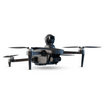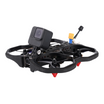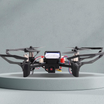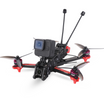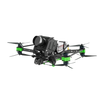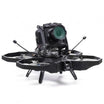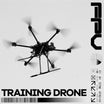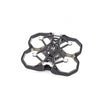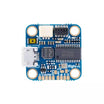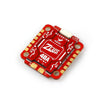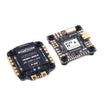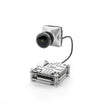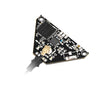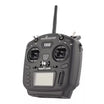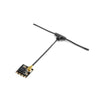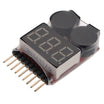As technology advances, the concept of autonomy is becoming increasingly prevalent across various domains, from consumer electronics to military applications. Autonomy refers to the ability of a system or device to operate independently, without human intervention. In the context of robotics and artificial intelligence, autonomy is typically classified into five distinct levels, ranging from complete human control to full autonomy.
Level 1: Human Control
At this level, the human operator maintains complete control over the system or device. The system has no autonomous capabilities and relies entirely on human input for its operation. Examples of Level 1 autonomy include traditional remote-controlled toys or drones operated solely by a human pilot.
Level 2: Human-Assisted Autonomy
In this level, the system can perform certain tasks autonomously, but a human operator is still required to monitor and intervene when necessary. The system can handle routine operations, but critical decisions and complex situations are handled by the human. Examples include advanced driver-assistance systems (ADAS) in modern cars, where the vehicle can maintain lane position and adjust speed autonomously, but the driver remains in control and responsible for steering and overall decision-making.
Level 3: Conditional Autonomy
At this level, the system can operate autonomously under specific conditions or within a predefined operational domain. The human operator is expected to take control when the system encounters situations outside its operational boundaries. An example is an autonomous shuttle operating on a predetermined route within a controlled environment, such as a university campus or an airport.
Level 4: High Autonomy
At this level, the system can operate autonomously in most situations, with minimal human intervention required. The system can handle complex scenarios and make informed decisions without human input. However, there may be exceptional circumstances where human oversight or intervention is necessary. An example would be a self-driving car capable of navigating through most urban and highway environments, but still requiring a human driver for certain edge cases or emergencies.
Level 5: Full Autonomy
At the highest level of autonomy, the system can operate entirely independently, without any human intervention or oversight. The system can make decisions, adapt to changing conditions, and handle all situations within its operational domain. An example of Level 5 autonomy would be a fully autonomous drone or robot that can navigate, make decisions, and complete missions without any human input or control.
Significance and Considerations
The pursuit of higher levels of autonomy has far-reaching implications across various domains, including military, transportation, manufacturing, and exploration. As systems become more autonomous, they can operate in environments that are too dangerous, remote, or complex for human operators, increasing efficiency, safety, and operational capabilities.
However, the development of autonomous systems also raises important ethical and legal considerations. The Geneva Convention and other international laws govern the use of autonomous weapons systems, aiming to ensure compliance with principles of humanity, discrimination, and proportionality. Safety and security are paramount concerns, as autonomous systems must be designed with robust failsafes, cybersecurity measures, and rigorous testing to mitigate potential risks and unintended consequences.
Risks and Advantages
While autonomous systems offer numerous advantages, such as increased efficiency, reduced human risk, and the ability to operate in hazardous environments, they also introduce potential risks. These include concerns surrounding the potential for errors, unintended consequences, and the challenges of ensuring accountability and ethical decision-making in complex scenarios.
As autonomy levels increase, the responsibilities and decision-making capabilities of the system also increase, raising questions about the extent to which machines can be trusted to make critical decisions that potentially impact human life or have far-reaching consequences.
The Future of Autonomy
The future of autonomy is poised to be transformative, with applications spanning various industries and domains. In the military sector, autonomous systems could revolutionize reconnaissance, surveillance, and combat operations, enhancing situational awareness, reducing casualties, and enabling new operational capabilities.
In the commercial realm, autonomous vehicles and drones have the potential to disrupt transportation and logistics, enabling more efficient and safer delivery of goods and services. Autonomous robots could also play a significant role in manufacturing, exploration, and hazardous environments, such as space, deep-sea operations, or disaster response scenarios.
Real-Life Examples and insideFPV's Achievement
Several companies and organizations are already making strides in developing highly autonomous systems. For instance, insideFPV, an Indian drone technology company, has achieved a remarkable milestone by developing a level 5 autonomous drone system for defense applications. This achievement makes insideFPV the second company globally, and the first in India, to attain this level of autonomy for defense applications.
insideFPV's level 5 autonomous drone system is capable of operating independently, without human intervention, across a range of missions and environments. This technology has the potential to revolutionize military operations, enabling autonomous reconnaissance, surveillance, and even offensive capabilities with minimal risk to human personnel.
The development of such highly autonomous systems is a testament to the rapid advancement of artificial intelligence, robotics, and autonomous technologies. As these technologies continue to evolve, we can expect to see an increasing integration of autonomous systems across various sectors, transforming the way we live, work, and operate.
Conclusion
The pursuit of higher levels of autonomy is a double-edged sword, offering immense potential benefits while also introducing complex ethical, legal, and safety considerations. As we continue to push the boundaries of autonomous systems, it is crucial to strike a balance between technological advancement and responsible development, ensuring that these powerful technologies are harnessed for the greater good while mitigating potential risks and unintended consequences.
Companies like insideFPV are leading the charge in developing cutting-edge autonomous technologies, paving the way for a future where autonomous systems play an increasingly vital role in various domains, from defense and security to transportation and exploration. As we navigate this exciting and challenging frontier, collaboration between researchers, developers, policymakers, and ethical experts will be essential to ensure that the integration of autonomous systems is guided by principles of safety, accountability, and ethical decision-making.


